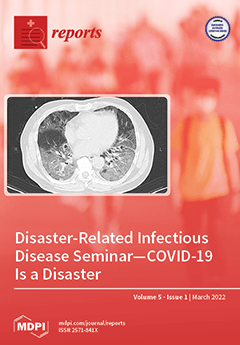Open AccessCase Report
A Case of Recent Liver Injury Induced by Benzbromarone
by
Tomotaka Ishii, Keijiro Hoshino, Masayuki Honda, Yoichiro Yamana, Reina Sasaki-Tanaka, Mariko Kumagawa, Shini Kanezawa, Taku Mizutani, Naoki Matsumoto, Ryota Masuzaki, Kazushige Nirei, Hiroaki Yamagami, Mitsuhiko Moriyama and Tatsuo Kanda
Cited by 1 | Viewed by 5578
Abstract
A 39-year-old male had a stomachache for 10 days before abnormal liver function tests were detected by a local doctor. Then, he was referred to us and admitted to our hospital for examination and treatment of elevated transaminases. He had taken benzbromarone to
[...] Read more.
A 39-year-old male had a stomachache for 10 days before abnormal liver function tests were detected by a local doctor. Then, he was referred to us and admitted to our hospital for examination and treatment of elevated transaminases. He had taken benzbromarone to treat his hyperuricemia for seven months, and we diagnosed him with benzbromarone-induced liver injury. After the termination of benzbromarone, he finally recovered from his illness. There are several reports about benzbromarone-induced liver injury. In conclusion, as periodic liver function tests seem not to be completely performed, clinicians should regularly monitor liver function tests in patients taking benzbromarone.
Full article
►▼
Show Figures





